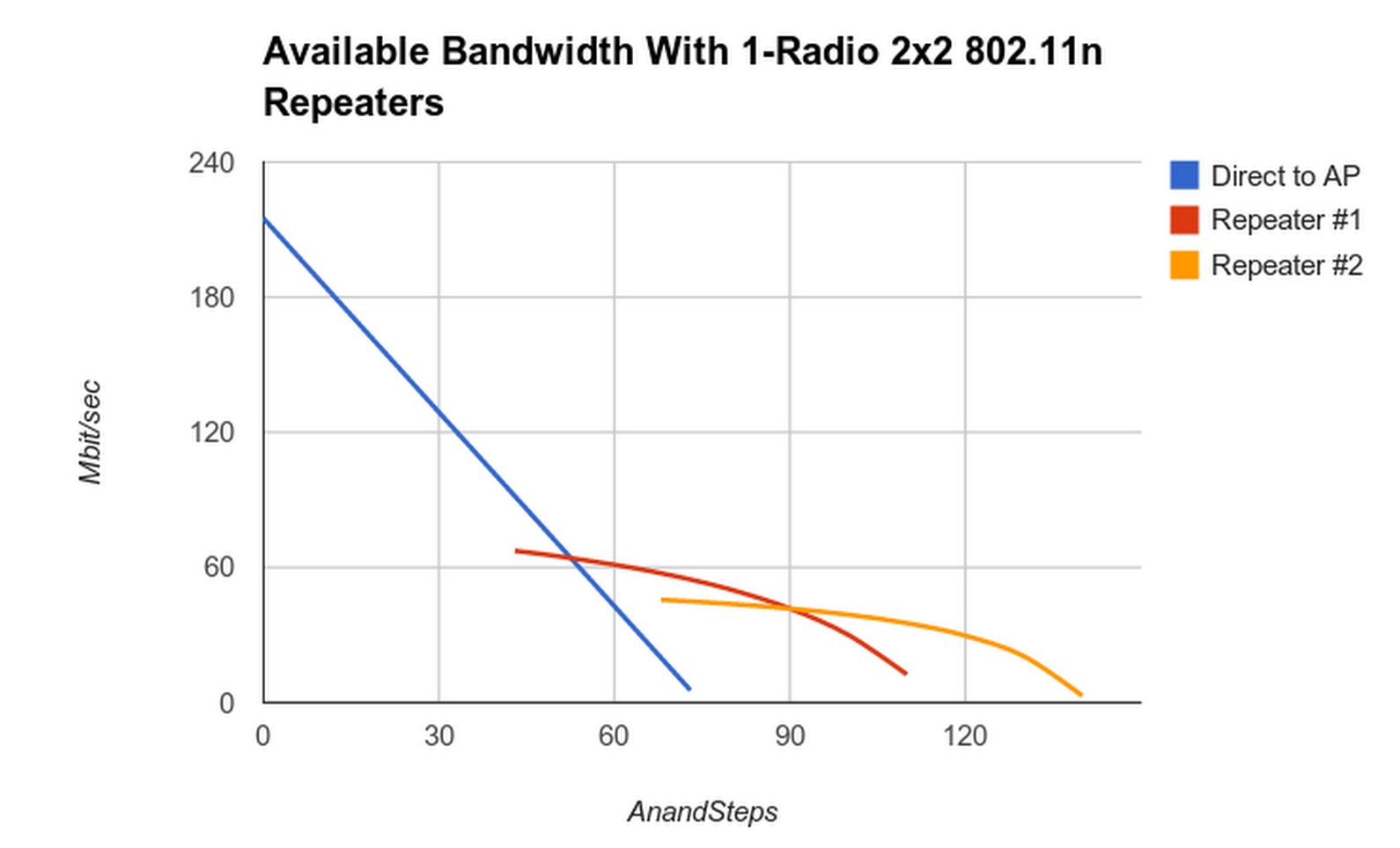2014-06-11 »
Calculations on the feasibility of 1-radio wifi repeaters
The short version is it's worse than expected.
The common wisdom about wifi repeaters is that they cut your bandwidth approximately in half with each hop. It turns out that's only true in the most optimistic case, where the repeater is so close to the upstream and downstream and it gets maximum wifi rates in each direction. But that never happens, because if you have signal strength that excellent, you didn't need a repeater.
What really happens is more like the diagram below. Let's say you're using 802.11n 2x2 40 MHz channels, with a marketing rate of 300 Mbit/sec (real-life throughput: 200 Mbit/sec). The blue line in the chart indicates the throughput you'd get if a station connected directly to the AP (no repeater) at distance x from the AP.
Now let's attach a repeater at about half the maximum range, ie. 100 Mbit/sec, x=45 AnandSteps or so in the chart. We then connect a station to the repeater. The red line corresponds to the overall speed you get (from the station to the AP) when your station is at location x. For x=45, your link to the repeater is about 200 Mbit/sec, so every bit you send upstream takes 1/200M seconds (station) + 1/100M seconds (repeater) = 1/66M seconds -> 66 Mbit/sec.
And you would never actually do that, because at x=45, you might as well talk to the AP directly and get your full 100 Mbit/sec. You'd want to use the repeater starting at x=50 or so (the crossover point between blue and red lines) where you get even less than 66 Mbit/sec.
Nowhere in this chart does anyone get even close to the "maximum throughput is cut in half" I was promised. And worse, note that if you let the client choose automatically between the AP and the repeater based on signal strength - as they typically do - then it will make the wrong decision between x=45 and x=50 or so, choosing the repeater because it's much closer even though it could get better results directly from the AP.
The orange line shows what happens when you add a second repeater into the chain. Interestingly, it doesn't feel all that much worse than one repeater.
That's the bad news. I'm still working on the good news.

Why would you follow me on twitter? Use RSS.
